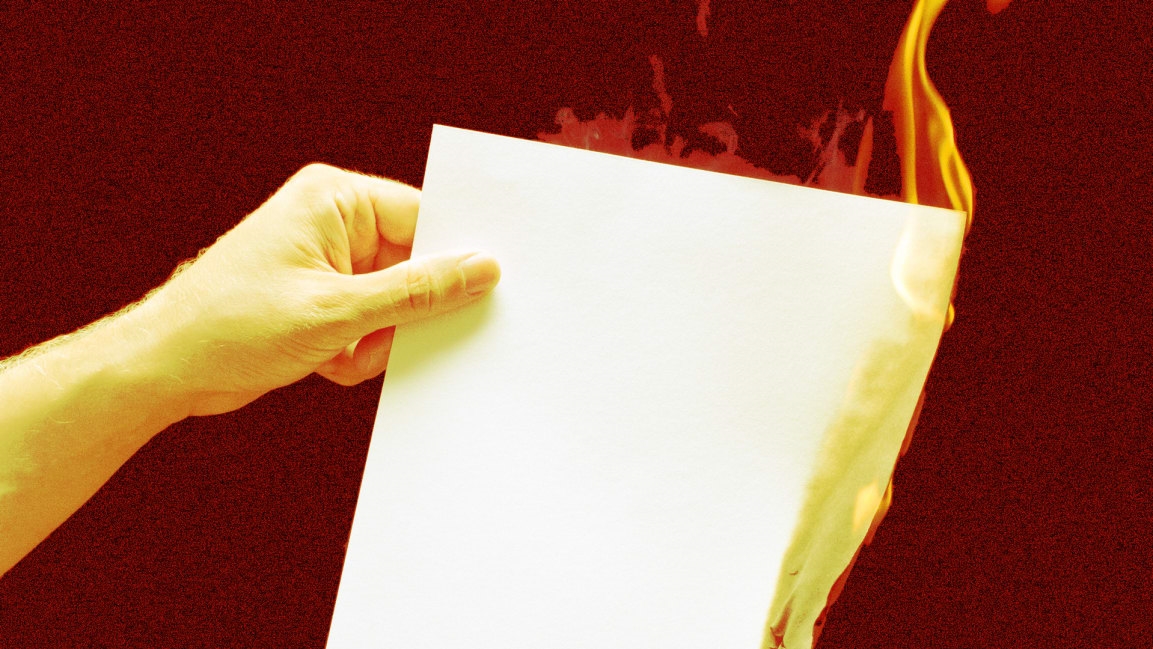To stay focused on your work, create a to-do list. Then burn it
I once had a job where every day, I’d get a list of what needed to be done. The list was always longer than was humanly possible to achieve.
At first it seemed like a Sisyphean struggle. I was trapped in a limbo where no matter how solid my morning routine, no matter how hard I worked or what my intentions were, I could never tick all the to-do boxes. Over time, to the benefit of my mental health, I learned some things on the list could get pushed to “tomorrow,” which eventually became “when there’s time” and then inevitably some things would fall off the list altogether.
It’s not a stretch to call Western society productivity-obsessed. We come by it honestly, since it’s embedded in our history. And our quest for ways to do more with less continues today. Productivity software alone accounts for a $130 billion market.
But now, in the pandemic, the all-work-no-play mentality is catching up with us. Burnout rates in the U.S. are as high as they were a year ago, before vaccine rollout was in full swing and in the thick of lockdowns. The pressure of COVID stress, the blurring of personal and professional boundaries and the never ending catch up is taking a toll.
In this era of information overload, it’s time we come to terms with an uncomfortable reality: The to-do list isn’t our friend. But there are ways to end its tyranny and reclaim wellbeing—while still getting shit done.
1. Write the list (then ignore it)
If you feel like you can’t escape work lately, know you’re not alone. A recent study conducted by NordVPN found that the pandemic has added two hours to the average workday for at-home workers worldwide. A different study from the pandemic found that some workers are inadvertently expected to do more work.
This may be a controversial opinion, but I sometimes tell my employees the to-do list can be most useful as a tool for finding out what you don’t need to do.
At my old job, I came to realize a lot of the tasks were thrown down the chain of command until they reached the bottom, where they found me. None of this workload was vital, or even mildly important, to the core operations of the company. I only realized this when I stopped fighting the clock to complete every task and surrendered myself to the inevitable.
That’s how I came to adopt my current approach to the to-do list: When you’re overwhelmed, write the list and don’t do anything on it—at least not right away. As issues come up, you’ll find your list naturally prioritizes itself. You’ll be able to spot the tasks that always get pushed to the bottom and come to accept they were never that important to begin with.
2. Walk away from lists and gadgets
To-do lists aren’t helpful when they’re a source of stress. Instead of feeling bad that you’re not getting enough done, take a timeout. After all, what is the to-do list’s purpose? If it’s to take stock of what you need to accomplish, there are other ways to do that.
I’m a fan of journaling. Reflective writing helps to offload what’s in your mind to free up some memory. For me, the act of putting pen to paper for something deeper than a checklist reconnects me with my purpose.
Granted, not everyone’s a writer. If you’re not a fan of journaling, try some form of meditation. Exercise counts, too. Go for a walk, a run, a bike ride, whatever gives you space to think. But importantly: leave your phone behind.
Research shows that meditation breaks helped workers avoid stress, kept them more focused and gave them a chance to reset between tasks. Don’t delude yourself into thinking you can work through your breaks. Nearly 90% of employees say taking a break helps them feel refreshed, and the research is clear that a pause in work leads to increased productivity, improved mental well-being and boosts in creativity.
If you’re out of the habit, start small; just five minutes of freedom can be helpful. What’s important is breaking things up. We aren’t machines, we’re human. There’s more to productivity than relentlessly pursuing the next task at hand.
3. Toss out your day planner
Across society, we’ve become so reliant on the structure of achieving something, that we’ve lost sight of the joy of doing. There are two lines written by the poet David White that resonate with me, “There is a small opening into the new day which closes the moment you begin your plans.”
Essentially, if you’re feeling overwhelmed, it might be time to kill your rigid schedules.
Plans are made to be interrupted. Consider the fact that we are checking our inboxes once every six minutes on average. Add to that the video calls, alerts, chats, and email in this hybrid environment—and you have yourself approaching a tipping point. For good reasons, I ditched my smartphone for a “dumb phone.” For instance, did you know it can take us over a minute to get back on track after sending a text message and as many as 23 minutes to recover from longer interruptions?
Indeed, there are massive benefits to reframing work as a series of meaningful events instead of as a fixed, hourly schedule. Unscheduled time and unstructured activities are where sparks of insight come from. Blocking out reflective time where you don’t cave to the demands of meetings and notifications can make you significantly more efficient.
I don’t know about you, but my mind has a funny way of bubbling up what’s most important. If I don’t give those thoughts time to percolate, I miss out on a lot, in terms of innovation and personal well-being. Give yourself the space to process instead of racing from one task to the next.
And I’d also encourage one extra important step: Go easy on ourselves. There’s been a lot to keep up with over the last 18 months or so—so forget the guilt you feel with the to-do list.
It can be useful as a guidepost, but it’s not a “make or break” manual to life. For me, I wake up each day a slightly different person. It’s a shame to live our lives playing catch up on the tasks we’d written out the day before.
Ben Crudo is CEO of Diff Agency. Ben is a technologist and ecommerce expert, who helps retailers win today and tomorrow.
(21)



